
Indigenous peoples once comprised an estimated 2000 tribes and nations inhabiting what is now the country of Brazil, before European contact around 1500.
The Tupi people, a subdivision of the Tupi-Guarani linguistic families, were one of the largest groups of indigenous peoples in Brazil before its colonization. Scholars believe that while they first settled in the Amazon rainforest, from about 2,900 years ago the Tupi started to migrate southward and gradually occupied the Atlantic coast of Southeast Brazil.

Amazonas is a state of Brazil, located in the North Region in the north-western corner of the country. It is the largest Brazilian state by area and the ninth-largest country subdivision in the world. It is the largest country subdivision in South America, being greater than the areas of Chile, Paraguay, and Uruguay combined. Mostly located in the Southern Hemisphere, Amazonas is the third-largest country subdivision in the Southern Hemisphere after the Australian states of Western Australia and Queensland. Located entirely in the Western Hemisphere, it is the fourth-largest country subdivision in the Western Hemisphere after Greenland, Nunavut, and Alaska. If independent, Amazonas could become the sixteenth-largest country in the world, slightly larger than Mongolia. Neighbouring states are Roraima, Pará, Mato Grosso, Rondônia, and Acre. It also borders the nations of Peru, Colombia and Venezuela. This includes the Departments of Amazonas, Vaupés and Guainía in Colombia, as well as the Amazonas state in Venezuela, and the Loreto Region in Peru.
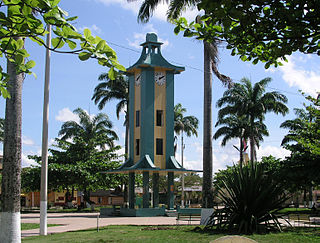
Puerto Maldonado is a city in southeastern Peru in the Amazon rainforest 55 kilometres (34 mi) west of the Bolivian border, located at the confluence of the Tambopata and Madre de Dios rivers. The latter river joins the Madeira River as a tributary of the Amazon. This city is the capital of the Madre de Dios Region.

Uncontacted peoples are groups of indigenous peoples living without sustained contact with neighbouring communities and the world community. Groups who decide to remain uncontacted are referred to as indigenous peoples in voluntary isolation. Legal protections make estimating the total number of uncontacted peoples challenging, but estimates from the Inter-American Commission on Human Rights in the UN and the non-profit group Survival International point to between 100 and 200 uncontacted peoples numbering up to 10,000 individuals total. A majority of uncontacted peoples live in South America, particularly northern Brazil, where the Brazilian government and National Geographic estimate between 77 and 84 tribes reside.
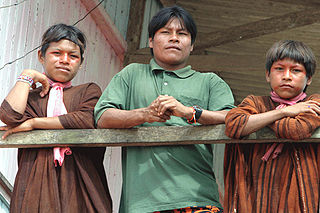
The Asháninka or Asháninca are an indigenous people living in the rainforests of Peru and in the State of Acre, Brazil. Their ancestral lands are in the forests of Junín, Pasco, Huánuco and part of Ucayali in Peru.

Panoan is a family of languages spoken in western Brazil, eastern Peru, and northern Bolivia. It is possibly a branch of a larger Pano–Tacanan family.

The Shipibo-Conibo are an indigenous people along the Ucayali River in the Amazon rainforest in Peru. Formerly two groups, the Shipibo and the Conibo, they eventually became one distinct tribe through intermarriage and communal ritual and are currently known as the Shipibo-Conibo people.

The Bora are an indigenous tribe of the Peruvian, Colombian, and Brazilian Amazon, located between the Putumayo and Napo rivers.

The Matsés or Mayoruna are an indigenous people of the Peruvian and Brazilian Amazon. Their traditional homelands are located between the Javari and Galvez rivers. The Matsés have long guarded their lands from other indigenous tribes and struggle with encroachment from illegal logging practices and poaching.
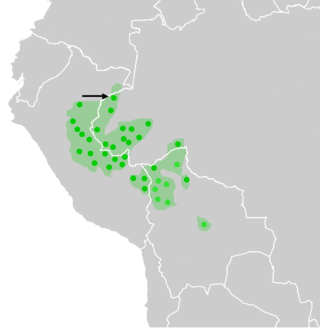
Matsés, also referred to as Mayoruna in Brazil, is an Indigenous language utilized by the inhabitants of the border regions of Brazil-Peru. A term that hailed from Quechua origin, Mayoruna translates in English to mayu = river; runa = people. Colonizers and missionaries during the 17th century, used this term, to make reference to the Indigenous peoples that occupied the lower Ucayali Region, Upper Solimões and Vale do Javari. Matsés communities are located along the Javari River basin of the Amazon, which draws out the boundaries between Brazil and Peru, hence the term river people. It is important to note that this term, was previously used by Jesuits to refer to inhabitants of that area, but is not formally a word in the Matsés language. The language is vigorous and is spoken by all age groups in the Matsés communities. In the Matsés communities several other Indigenous languages are also spoken by women who have been captured from neighboring tribes and some mixture of the languages occur. Dialects are Peruvian Matsés, Brazilian Matsés, and the extinct Paud Usunkid.

The Indigenous peoples of Peru, or Native Peruvians, comprise a large number of ethnic groups who inhabit territory in present-day Peru. Indigenous cultures developed here for thousands of years before the arrival of the Spanish in 1532.
Amahuaca is an indigenous language of the Amazon Basin in Perú and Brazil. It is also known as Amawaka, Amaguaco, Ameuhaque, Ipitineri, and Sayaco. Amahuaca is a Panoan language that is believed to be closely related to Cashinahua and Yaminawa. There around 220 speakers in Brazil, and around 328 speakers in Peru.
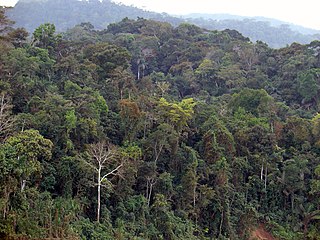
Peruvian Amazonia, informally known locally as the Peruvian jungle or just the jungle, is the area of the Amazon rainforest included within the country of Peru, from east of the Andes to the borders with Ecuador, Colombia, Brazil and Bolivia. This region comprises 60% of the country and is marked by a large degree of biodiversity. Peru has the second-largest portion of the Amazon rainforest after the Brazilian Amazon.
Endocannibalism is a practice of cannibalism in one's own locality or community. Endocannibalism has also been used to describe the consumption of relics in a mortuary context.

The Amazon rubber cycle, or boom was an important part of the economic and social history of Brazil and Amazonian regions of neighboring countries, being related to the extraction and commercialization of rubber. Centered in the Amazon Basin, the boom resulted in a large expansion of colonization in the area, attracting immigrant workers, generating wealth, causing cultural and social transformations, and disrupting local indigenous societies.
The Mashco-Piro or Mascho Piro, also known as the Cujareño people and Nomole, are an indigenous tribe of nomadic hunter-gatherers who inhabit the remote regions of the Amazon rainforest. They live in Manú National Park in the Madre de Dios Region in Peru. They have in the past actively avoided contact with non-native peoples.
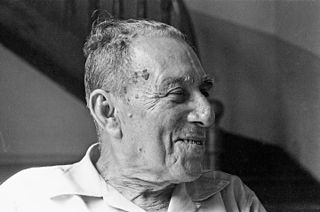
Manuel Córdova-Rios was a vegetalista (herbalist) of the upper Amazon, and the subject of several popular books.

The Las Piedras River is a major tributary of the Madre de Dios River in the southeast Peruvian Amazon.

Carlos Scharff was a Peruvian rubber baron of German descent who was active along the Upper Purus and Las Piedras rivers during the Amazon rubber boom in Peru. He also served for many years during his youth as an agent for the Belgian consulate in Brazil.















